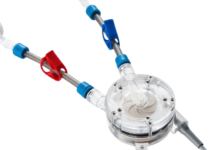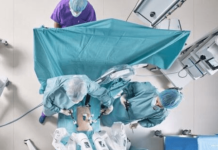The US Food and Drug Administration (FDA) has granted clearance to Spineart for its Scarlet AC-Ti anterior cervical cage. Cages are interbody devices used in spinal fusion surgeries to act as a space holder between vertebrae to help decompress the spinal cord and nerve root. The cages are hollow, allowing bone to grow through it.
Related: Galvanize wins FDA nod for pulsed electric field endoscopic needle
Switzerland-based Spineart says its Scarlet AC-T system combines an “implant interbody device and cervical plate” in one.
Spineart designed the device for cervical use based on the company’s Scarlet system – which also bore cages for anterior lumbar use.
The company differentiates its devices based on its Ti-LIFE technology, an additive manufacturing process. According to Spineart, this technology gives the devices a porous titanium framework that closely mimics the trabecular bone structure.
Spineart says the technology gives its devices an average pore diameter of 0.9mm, giving a porosity between 70% and 75%, enabling cell colonisation.
The global metal interbody device market for spinal fusion was worth $293m in 2023 and is predicted to decrease to $233m by 2033, according to analysis by GlobalData. This is in part due to the increasing popularity of non-metal interbody devices, such as those made from carbon fibre, and polyetheretherketone (PEEK) cages. The PEEK market is estimated to grow to $4.6bn by 2033, up from $2.7bn in 2023.
According to research carried out in sheep, Spineart’s 3D-printed interbody cages outperformed PEEK cages in terms of bone cell proliferation.
Spineart’s chief commercial officer Alessia Erlingher said: “This approval underscores our commitment to innovation, continuously evolving our most successful products, such as the Scarlet system.”
It is another successful milestone for the company, which raised $22m (SFr20m) in financing in March.
Part of the funding will go towards two investigational device exemption (IDE) studies for a cervical intervertebral disc replacement device.
Other portions of the funds will be used to open a new research and development centre in the US, along with the completion of a new factory currently in Geneva by the end of 2024.






